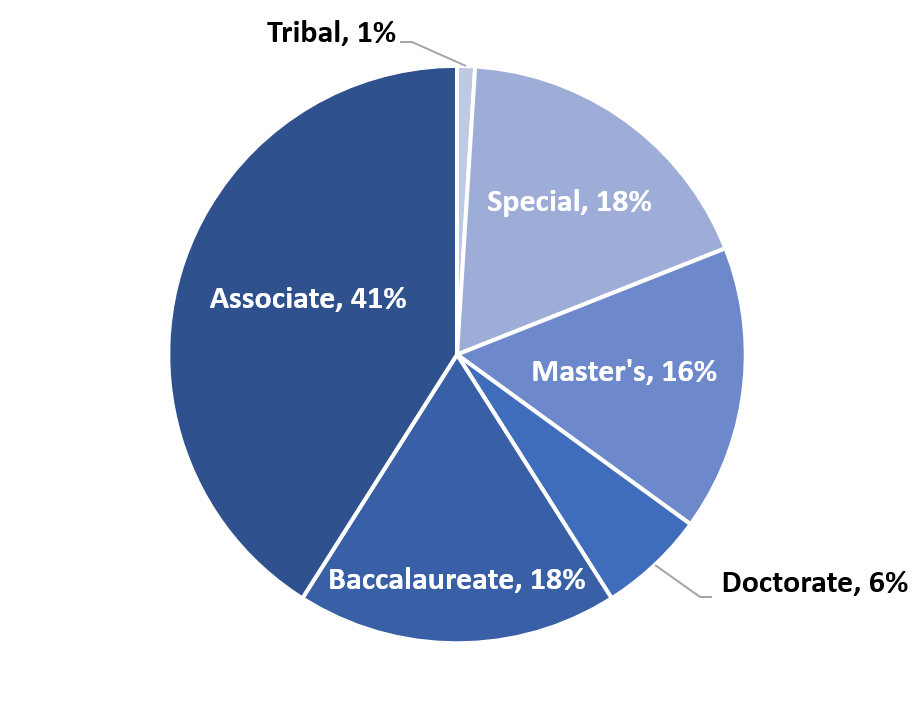The Carnegie Classification of Institutions of Higher Education is the primary framework for describing and comparing institutional diversity in American higher education. All accredited degree-granting institutions in the U.S. represented by the National Center for Education Statistics can be found on the Carnegie classifications website.

Percentage of institution types within U.S. higher education (based on data from the Carnegie Classification of Institutions of Higher Education, 2010).
Institution Types
Associate’s Colleges (41% of total)
Also called community colleges and two-year colleges, this category includes institutions where over 90% of degrees conferred are at the associate’s degree level or lower. These institutions also frequently offer lower level undergraduate courses for transfer to four-year institutions. For additional information on associate’s colleges, see:
-
Jenkins, Rob. "What Community Colleges Want." Chronicle of Higher Education. October 14, 2008.
Baccalaureate Colleges (18% of total)
Also commonly called liberal arts colleges, institutions fall into this category if bachelor’s degrees accounted for at least 10 percent of all undergraduate degrees and the institution awarded fewer than 50 master’s degrees in an academic year. To learn more:
-
Hanway, Nancy. "How to Land a Job at a Small College." Chronicle of Higher Education. July 25, 2010.
Doctorate-Granting Universities (6% of total)
This category includes institutions that awarded at least 20 (research) doctorates during the academic year, not including most professional degrees (e.g. JD, MD, PharmD, AudD). Within the Carnegie Classifications, doctoral-granting institutions are further subdivided based on research activity.
Master’s Colleges & Universities (15% of total)
This category includes institutions that awarded at least 50 master’s degrees during the academic year, but fewer than 20 doctoral degrees. Some resources on these institutions include:
-
Henderson, Bruce B. Teaching at the People’s University: An Introduction to the State Comprehensive University. Bolton, Mass.: Anker Publishing Company, 2007.
Special Focus Institutions (18% of total)
These are institutions awarding bachelor’s degrees or higher where 75% or more of the degrees are in a single field or set of related fields (e.g. medical school, seminary, art, music, law). Examples of special focus institutions include the New England Conservatory of Music, Rose-Hulman Institute of Technology, John Marshall Law School, and the Culinary Institute of America.
Tribal Colleges (1% of total)
These are defined as members of the American Indian Higher Education Consortium.